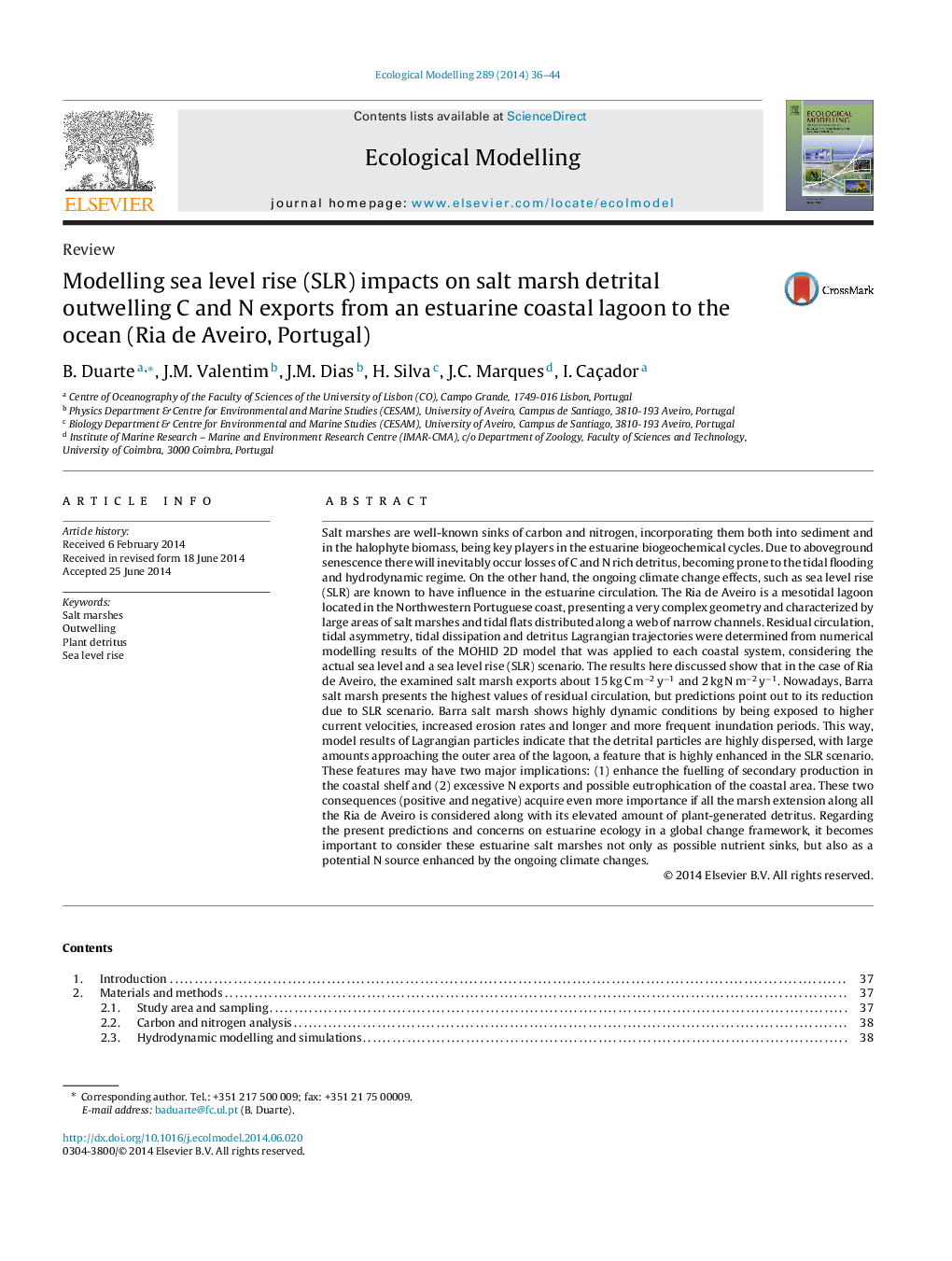| Article ID | Journal | Published Year | Pages | File Type |
|---|---|---|---|---|
| 6296815 | Ecological Modelling | 2014 | 9 Pages |
Abstract
Salt marshes are well-known sinks of carbon and nitrogen, incorporating them both into sediment and in the halophyte biomass, being key players in the estuarine biogeochemical cycles. Due to aboveground senescence there will inevitably occur losses of C and N rich detritus, becoming prone to the tidal flooding and hydrodynamic regime. On the other hand, the ongoing climate change effects, such as sea level rise (SLR) are known to have influence in the estuarine circulation. The Ria de Aveiro is a mesotidal lagoon located in the Northwestern Portuguese coast, presenting a very complex geometry and characterized by large areas of salt marshes and tidal flats distributed along a web of narrow channels. Residual circulation, tidal asymmetry, tidal dissipation and detritus Lagrangian trajectories were determined from numerical modelling results of the MOHID 2D model that was applied to each coastal system, considering the actual sea level and a sea level rise (SLR) scenario. The results here discussed show that in the case of Ria de Aveiro, the examined salt marsh exports about 15 kg C mâ2 yâ1 and 2 kg N mâ2 yâ1. Nowadays, Barra salt marsh presents the highest values of residual circulation, but predictions point out to its reduction due to SLR scenario. Barra salt marsh shows highly dynamic conditions by being exposed to higher current velocities, increased erosion rates and longer and more frequent inundation periods. This way, model results of Lagrangian particles indicate that the detrital particles are highly dispersed, with large amounts approaching the outer area of the lagoon, a feature that is highly enhanced in the SLR scenario. These features may have two major implications: (1) enhance the fuelling of secondary production in the coastal shelf and (2) excessive N exports and possible eutrophication of the coastal area. These two consequences (positive and negative) acquire even more importance if all the marsh extension along all the Ria de Aveiro is considered along with its elevated amount of plant-generated detritus. Regarding the present predictions and concerns on estuarine ecology in a global change framework, it becomes important to consider these estuarine salt marshes not only as possible nutrient sinks, but also as a potential N source enhanced by the ongoing climate changes.
Keywords
Related Topics
Life Sciences
Agricultural and Biological Sciences
Ecology, Evolution, Behavior and Systematics
Authors
B. Duarte, J.M. Valentim, J.M. Dias, H. Silva, J.C. Marques, I. Caçador,
